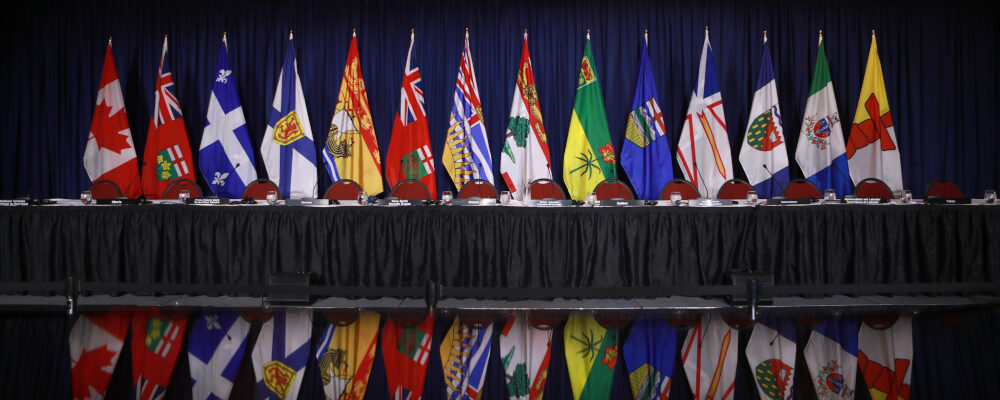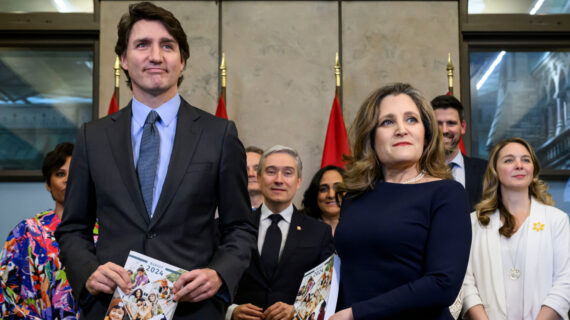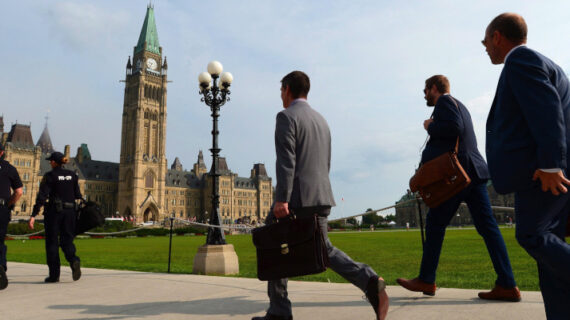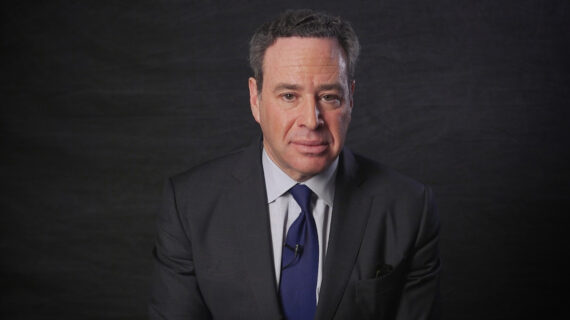Part III:
Part I began to explore the distinction between a nation and a province in response to Saskatchewan’s recent white paper “Drawing the Line.” Part II provided an answer to why the Québécois are a nation and Saskatchewan isn’t. Here, Part III explains why the distinction shouldn’t matter for the proper working of Canadian federalism.
Saskatchewan is not and cannot be a nation, but I would push the idea even further. Not only are the nine English Canadian provinces not expressions of individual national identities, English Canada is not a nation either. This makes nonsense of the second part of the idea that Saskatchewan should become “a nation within a nation.” A nation is the political expression of a culturally-distinct people, which may exist within a country, but it can’t comfortably exist within another nation. That is why the 2006 motion in Parliament recognized the Québécois as a nation “within a united Canada.” Canada is a country, but neither it nor what the Québécois refer to, with magisterial disregard, as “the Rest of Canada” constitutes a coherent nation, if it ever did.
Pierre Trudeau, who viewed nationalism as an immature social state characterized by a reactionary political emotionalism that must give way to a “cold, emotionless rationality,1Two of the essays in the collection by which he introduced his political theory to an English Canadian audience in 1967, Federalism and the French Canadians, end with the same quote from Lord Acton warning that the course of “nationalism … will be marked with material as well as moral ruin.” (in Trudeau’s lexicon, that is a positive), nevertheless accepted that “[i]t is not the concept of nation that is retrograde; it is the idea that the nation must necessarily be sovereign.” “The nation” is, he said, “the guardian of certain very positive qualities: a cultural heritage, common traditions, a community awareness, historical continuity, a set of mores.” But it did not need absolute sovereignty to cultivate its national character, only the powers necessary to do so.
Trudeau opposed a Quebec nationalism that sought political sovereignty or a “special status” (which, as he used it, meant something between a province and an independent state), but he was interested in the question of how “without backsliding to the ridiculous and reactionary idea of national sovereignty … we protect our French-Canadian national qualities?” His conclusion was that Quebec’s linguistic and cultural ambitions could be accommodated within a “multi-national” federal state.
Here, however, the man, who more than any other Canadian leader prided himself in his progressive foresight, showed a typically-Laurentian blind spot. He could not see that Canada’s future would not be multi-national because there was no longer an “English-Canadian nation.” It was just a theoretical construct that most Quebeckers of his generation assumed must exist as the natural counterpart to the French-Canadian nation. It didn’t exist then, and it doesn’t exist now. Nor is the other option—a truly “national” federal Canadian culture that appeals to and thus transcended regional attachments, including the French-Canadian aspirations—any more realistic than it was when Trudeau was writing.
Few people were prepared to accept the futility of a single national culture back in the 1960s, and many Canadians still refuse to do so today. If only the federal government would build more truly national institutions and impose more centralization, they insist, we could put our regional bickering behind us and come together as a united country—perhaps even a nation! There exists still a thriving ecosystem of self-serious (and usually tax-payer-funded) Canadian institutions that still cling to the doomed belief that, as Trudeau described it in 1967:
Resources must be diverted into such things as national flags, anthems, education, arts councils, broadcasting corporations, film boards; the territory must be bound together by a network of railways, highways, airlines; the national culture and the national economy must be protected by taxes and tariffs; ownership of resources and industry by nationals must be made a matter of policy.
This is the Canadian Boomer nostalgia industry.2Whenever the idea of a new Canadian nationalism is raised, you can be sure that misty-eyed reminiscences about “the spirit of Expo ‘67” and appeals to the unifying power of Medicare (the ultimate Boomer public policy) are not far behind. The members of these bodies tend to be well-connected to (especially Liberal) federal governments, so they are not unimportant, just irrelevant. Because they cannot accept that the fight to define a post-Imperial Canadian national identity was over before it was joined, they continue talking to each other at lectures, conferences, and salons, much like White Russians in London between the wars plotting the future of Tsarist Russia. These efforts aren’t entirely wasted, though: Ottawa’s catering industry depends upon them for its survival.
At the same time that Trudeau was defending the idea of a multi-national federation, Senator Paul Yuzyk was using his maiden Senate speech to advance the idea that Canada was not the bicultural society that Pearson’s Royal Commission had set out to define, but multicultural. Yuzyk was, for the first time, giving voice to the perspective of the new Western provinces with their large populations of Central and Eastern Canadians and their established Chinese, Japanese, and South Asian communities. As prime minister, Pierre Trudeau’s official recognition of multiculturalism, first in 1971 and then in the repatriated constitution in 1982, was a tacit (and perhaps oblivious) admission of the impossibility of either an English-Canadian nation or a unified national vision.
This leaves us in an odd place where the idea of two founding peoples is obsolete, but only on one side. The idea probably ceased to be accurate for English Canada shortly after the time that the Imperial government admitted Alberta and Saskatchewan provinces to Confederation,3 By 1911, the influx of Eastern Europeans, Northern Europeans, and especially Americans meant that Alberta was the only province in which the Canadian-born were a minority. At that time, almost a quarter of the province’s residents were American immigrants, and this percentage was much higher in the rural south of the province. See Nelson Wiseman, “The American Imprint on Alberta Politics“, Great Plains Quarterly (Winter 2011). but by the time Pearson ditched the old flag it was as anachronistic as the fur trade.4In 1970, Charles Taylor wrote that “[t]he ‘two solitudes’ of Hugh MacLennan are still a fundamental reality in Canada,” but here I believe this most perceptive of Canadian social commentators erred in reflecting a distorted and distinctly central Canadian perspective. Charles Taylor, “A Canadian Future?”, in The Pattern of Politics (1970). Even if traces of an English-Canadian solitude could still be discerned outside Montreal in 1970, the continued growth of the Western provinces in population and wealth and the related political development of an exuberant and assertive prairie spirit, have since erased it. Taylor recognized this trend in a 1991 article, in which he observed that “[o]ver the decades English Canada has been becoming more and more diverse and less and less ‘English.’” Charles Taylor, “Shared and Divergent Values”, in Ronald Watts and Douglas Brown (eds), Options for a New Canada (1991). There is very little that unites the provinces outside Quebec beyond a mutual recognition that we are better off together than apart, which is not nothing, but also not enough to support more than a federal identity that is more notional than national. In that light, Saskatchewan’s desire for constitutional autonomy, however crudely expressed, makes sense as a provincial (and perhaps regional, but not national) goal.
However much hope the Government of Saskatchewan might take from Pierre Trudeau’s old assurance that “the different regions within the country, must be assured of a wide range of local autonomy, such that each national group … may be able to develop the body of laws and institutions essential to the fullest expression and development of their national characteristics,”5Emphasis added. Saskatchewan is not and cannot meaningfully claim to be a nation. Fortunately, most of Trudeau’s vision of a multi-national federation can be salvaged by substituting “province” for “nation.” We recognize the unique Québécois claim to nationhood while insisting on a degree of constitutional respect for Saskatchewan sufficient to meet its provincial ambitions.
As I wrote in these pages after the last federal election:
We are a country of many solitudes. We are at least ten distinct regions, split by generation, and further diced, divided, and dissected along linguistic, religious, cultural, moral, rural/urban, and class lines. Pick two points on this multi-dimensional graph and the visions of Canada you see will be fundamentally incompatible and, in some cases, mutually incomprehensible.
Charles Taylor has described the mutual incomprehensibility between the French and English perspectives of themselves, of each other, and of Canada as “two photographs of the same object taken from such different points of view that they cannot be superimposed.” Expanding this metaphor of multiple and multiplying solitudes, the perspectives are now so kaleidoscopic that an accurate portrait of Canada today would have to be Cubist.
These colliding perspectives pose a challenge if we want to continue to live together as part of a united country. In another article, I proposed that “a renewed respect for the principles of Confederation is the best hope we have for accommodating our many solitudes” because, while “[f]ederalism and decentralisation may leave us without a unifying national identity … the alternative is a procrustean imposition of a single, central idea of Canada, which by definition will be alien and unwelcome in some parts of the country.”6Constitutional lawyer Asher Honickman suggested something similar in a Hub Dialogue. And, in a perceptive 1993 article that deserves to be re-read, Alain-G Gagnon and Guy Laforest (drawing on work by Charles Taylor and James Tully) proposed that “Quebec’s desire to express its specificity should not be interpreted as a mutiny but rather as a profound attachment to the federal spirit.” They concluded that:
“Now more than ever, there is an urgent need for some “constitutional morality”: a morality that would allow for sensitivity to the Quebec question and that would refrain from imposing identical requirements on all communities for association with the Canadian state. Canada, after all, has been built on many competing, but reinforcing, identities. To require that Quebecers put the principles of provincial equality, pan-Canadian uniformity, and individual rights above everything else is, by definition, to relinquish the premises of federalism among complex societies.”
Alain-G Gagnon and Guy Laforest, “The future of federalism: lessons from Canada and Quebec”, International Journal, Vol. 48, No. 3, (Summer 1993). I would endorse this conclusion and add that, in the years since they wrote, the reality of Western alienation has reached the level of concern to warrant similar constitutional accommodation, legally and politically.
Or, to quote Marshall McLuhan’s review of Pierre Trudeau’s Federalism and the French Canadians, because “Canada never had a unified national identity or goal,” federalism offers “the cool, casual interface of the numerous components minus the old 19th century drive for goals and gains.” A federalism reliant on offish comity may lack the romance of a Garibaldian nationalism (let alone ten such national visions), but in place of passion it offers a practical modus vivendi. And for a relationship that has lasted 155 years, there is no shame in recognizing that separate beds make for a happier marriage. A marriage de raison is still a marriage and can be a very successful one.
Since I wrote those two articles, almost all the criticism has come from Laurentian elites (a former prime minister called it “an alarming vision of Canada”!), which rather proves my point. Ontarians in particular are often surprised and dismayed that the rest of the country to its west doesn’t behave like an extended suburb of Toronto. When their intrusive ignorance results in a predictable backlash—prairie alienation or BC indifference—they then double down on the need for more political unity. A unity forged, naturally, in their own image. It is not surprising that Saskatchewan (and Alberta) have had enough of this Central Canadian chauvinism and are now rejecting it in favour of the constitutional division of powers.
The problem that Saskatchewan is trying to solve is not asymmetrical nationalism—there is only one nation in Canada—but an asymmetrical federalism. This is a federal model that accords Quebec special (and mostly appropriate) privileges within a Central Canadian vision of Canada. Premier Moe is quite right to push back against this model and insist on his province’s constitutional rights, especially in the face of an unusually hostile federal government. But he doesn’t need to pretend to a nonsensical nationhood to do so.
Nation or province, all constituent parts of Canada are entitled to the full measure of their constitutional autonomy, which they are free to take up or ignore to whatever degree they believe is necessary to meet their diverse ambitions. The exercises of provincial power necessary to secure the ambitions of a nation may be greater than those required to satisfy Saskatchewan’s regional ambitions, or they may simply be different. But the one should be no impediment to the other, and a responsible federal government would respect both.




